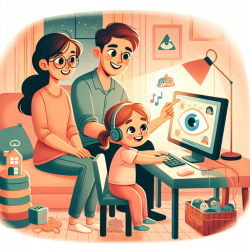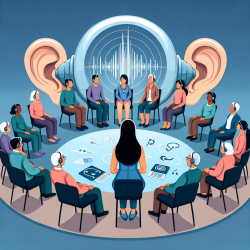Introduction
In the realm of speech-language pathology, understanding the genetic underpinnings of neurodegenerative diseases can significantly enhance therapeutic outcomes. The research article titled "Clinical Characteristics of C9ORF72-Linked Frontotemporal Lobar Degeneration" provides a comprehensive analysis of the genetic factors influencing Frontotemporal Lobar Degeneration (FTLD) and its implications for clinical practice. This blog aims to distill the findings of this study to empower practitioners in making data-driven decisions that improve outcomes for children and adults alike.
The Genetic Landscape of FTLD
Frontotemporal Lobar Degeneration is a prevalent form of early-onset dementia, with significant overlap with amyotrophic lateral sclerosis (ALS). The C9ORF72 gene, particularly its hexanucleotide repeat expansion, is identified as a major genetic cause of FTLD. This expansion accounts for a substantial percentage of familial FTLD cases globally and is notably prevalent in Finland.
For speech-language pathologists, understanding the genetic basis of FTLD is crucial. It provides insights into the potential cognitive and behavioral symptoms that may manifest in affected individuals. This knowledge allows practitioners to tailor interventions that address specific challenges faced by children and adults with FTLD.
Clinical Implications for Practitioners
The study highlights several key clinical characteristics associated with C9ORF72-linked FTLD:
- High frequency of neuropsychiatric symptoms, including psychosis, which may precede other symptoms by years.
- Concomitant ALS is more common in C9ORF72 expansion carriers, necessitating a multidisciplinary approach to care.
- Behavioral variant frontotemporal dementia (bvFTD) is the most common phenotype, followed by progressive non-fluent aphasia (PNFA).
For practitioners, these findings underscore the importance of early and accurate diagnosis. Recognizing the signs of FTLD, particularly in cases of middle-age-onset psychosis, can lead to timely interventions that mitigate the impact on communication and daily functioning.
Encouraging Further Research
While the study provides valuable insights, it also opens avenues for further research. The role of potential disease modifiers, such as the apolipoprotein E (APOE) genotype, remains an area of interest. Understanding how these factors influence the clinical presentation of FTLD can enhance therapeutic strategies.
Practitioners are encouraged to contribute to ongoing research efforts by documenting clinical observations and outcomes. Collaborative research initiatives can lead to a deeper understanding of FTLD and its implications for speech-language pathology.
Conclusion
The insights gained from the study of C9ORF72-linked FTLD are invaluable for speech-language pathologists. By integrating genetic knowledge into clinical practice, practitioners can develop targeted interventions that improve communication outcomes for individuals with FTLD. As we continue to unravel the complexities of this condition, collaboration and research will be key to unlocking its mysteries.
To read the original research paper, please follow this link: Clinical Characteristics of C9ORF72-Linked Frontotemporal Lobar Degeneration.










